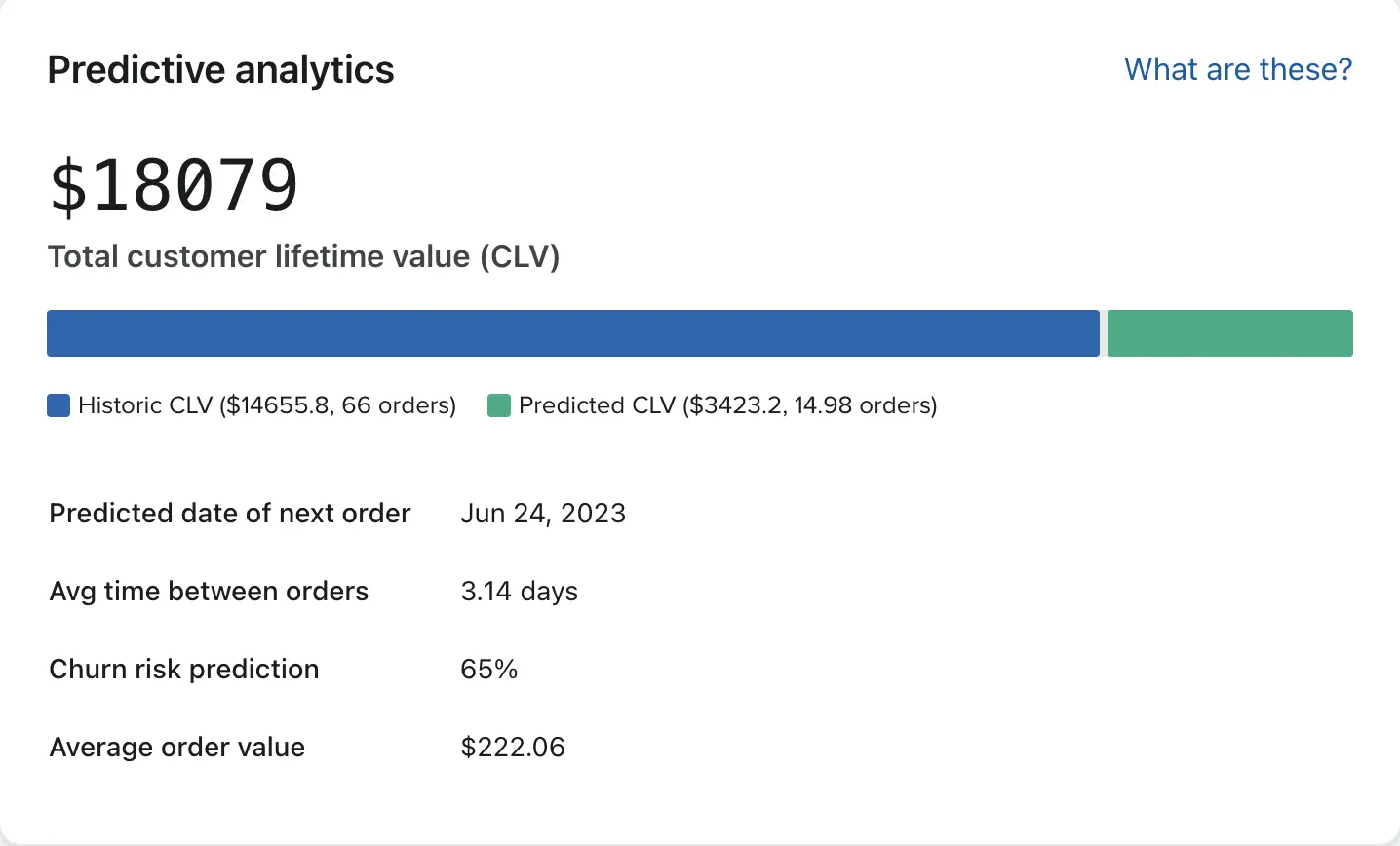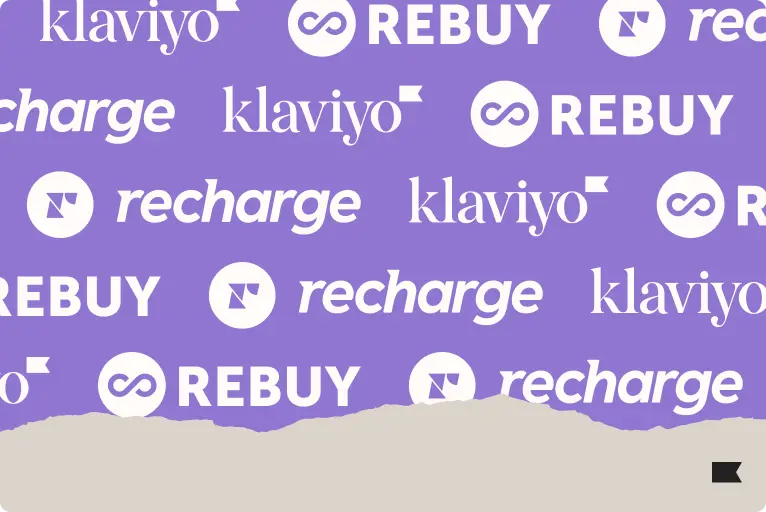The top 9 reasons customers churn—and how to course-correct quickly

Customer churn rate is massively important for understanding the health of your business.
That is true whether you run a subscription model or a one-time payment model, and it’s because of churn prediction’s unique ability to retain customers and attract repeat purchases.
Customer churn rate measures the amount of customers who stop purchasing from your business within a given amount of time.
According to Klaviyo’s data science team, churn rates for average customers can be as high as 70%. If you’re seeing churn prediction values around 50%, you’re in excellent shape with your customer base.

Before you can reduce customer churn, you need to understand why customers churn in the first place. Here, we’ll run through the top 9 reasons for customer churn, with some quick tips on how to address them.
Want to go beyond reasons for customer churn? Check out these resources:
- A deeper dive on reducing customer churn
- How to predict customer churn without investing in a data analytics team
1. Customers aren’t satisfied with your product
It’s basic, it’s common, and it can be hard to fix—if your products don’t satisfy customers, your customers won’t buy again.
If you’re seeing a high number of bad reviews, you may need to look into what aspects of your product design are deterring customers.
Recommended solution: Create a segment of your 1- and 2-star reviewers. Ask them for feedback via a survey. And then begin to deep dive into their response, and how you can help solve for them. You can use a third-party tool like Typeform to set this up quickly within Klaviyo.
2. Your shipping and fulfillment don’t meet expectations
Delays, damaged goods, or poor packaging can all lead to customer frustration and churn.
Shipping and fulfillment issues are either a problem of communication—the customer’s expectations were set one way, but something else happened—or your business actually needs a shipping logistics review.
Recommended solution: Set clear expectations about when people can expect their order. You may not be able to control all shipping variables, but you can control your communication about timelines, including limitations and delays.
This example from BrüMate shows how you can set expectations during the holidays with clear shipping cut-off dates for ground, express, and two-day shipping.

Image source: Klaviyo
3. Your prices are too high for the market
If one of your competitors starts offering a similar product at a lower price, customers may churn if they’re not loyal to your brand.
Recommended solution: Take care of customers by offering competitive pricing, the occasional discount, and customer appreciation promotions (like birthday discounts or VIP campaigns year-round) that make people feel special.
Always communicate the unique value of your product—especially for higher-ticket items.
4. Your product descriptions over-promise and under-deliver
If customers buy one thing and receive a product that doesn’t quite match its description, they may feel misled and opt not to buy again.
Recommended solution: Review your product description pages for accuracy and resist the urge to embellish outside the realities of what your product can do.
5. Your post-purchase support isn’t thorough enough
Post-purchase support is especially important for products that require ongoing maintenance or education on optimal use. If customers buy a product like this and don’t receive proper guidance, they might not buy again.
Recommended solution: Create an educational post-purchase email flow, which is a type of marketing automation, especially if your product requires instructions, care, or maintenance to use.
This email from Dossier, for example, provides tips on how to get the most out of their perfume so that their customers use the product properly:

Image source: Dossier
6. Your return/exchange policies are too complicated
A restrictive or complicated return or exchange policy can discourage customers from making future purchases.
It may sound counterintuitive at first, but an intuitive, convenient return or exchange process promotes retention in the long run by making sure customers get the products they actually want.
Recommended solution: Keep your return policy simple with plain language, and offer multiple ways to return products. When customers do return products, keep them updated on the status of the return via email or SMS.
7. Your customer experience is poor
According to a 2023 survey by TCN, Americans are becoming less forgiving of bad customer service: In 2023, 73% of Americans are “likely to abandon a brand after just one poor customer service experience”—up from 66% in 2022 and 42% in 2021.
If your customer service doesn’t meet expectations, customers are more likely to cancel so they can feel cared for somewhere else.
Recommended solution: You can lean on post-purchase email flows to take some of the load off your customer service team. But you’ll also need to employ a mix of AI chatbots and human customer agents via multiple channels to provide the customer service people expect. Klaviyo’s integration with both Zendesk and Gorgias make customer service organization a breeze in-platform.
8. Your prices have gone up
If you raise prices without proper and extensive communication about added value, your churn rate increase is likely to hit hard and fast.
You may have solid economic reasons for raising prices, but you don’t want to do it without a long lead time, a sound communication plan, and strategies to cushion the blow when churn rates go up.
Recommended solution: Communicate price increases way in advance so you can at least start predicting churn rates among customers. When you have a sense of what the fallout might be, you’re in a better position to ramp up either customer acquisition strategies or communication with customers most likely to churn.
9. You’re sticking to an inflexible subscription plan
If customers feel bound by rigid subscription plans that don’t respect changes in lifestyle or circumstances, they may opt to leave if they can’t make the subscription work for themselves.
Recommended solution: Offer payment tiers, pause options, and easy renewal so you’re not losing customers permanently.
Customer churn solutions checklist
- Segment your 1- and 2- star reviewers, and send a survey via Typeform to gather actionable feedback.
- Set clear expectations about when people can expect their order.
- Offer competitive pricing, the occasional discount, and customer appreciation promotions.
- Review your product description pages for accuracy.
- Create an educational post-purchase email flow.
- Simplify your return policy and keep customers updated on the status of their return.
- Communicate price increases early so you can start to predict customer churn.
- Offer payment tiers, pause options, and easy renewal for subscriptions.
Reasons for customer churn FAQs
What are the main reasons for customer churn?
The main reasons for customer churn include:
- Product dissatisfaction
- Shipping and fulfillment issues
- High prices
- Inaccurate product descriptions
- Lack of post-purchase support
- Complex return/exchange policies
- Poor customer experience
- Price increases
- Lack of product customization options
- Inflexible subscription plans
What are the disadvantages of customer churn rate?
The disadvantage of customer churn rate as a broad metric is that it doesn’t delineate between new customers lost and long-term customers lost. Segmentation can help brands dive deeper into their customer churn rate so that it becomes more of a useful metric rather than a catch-all bucket.
What is a good churn rate?
The lower your churn rate, the better. According to Klaviyo’s data science team, churn rates for average customers can be as high as 70%. If you’re seeing churn prediction values around 50%, you’re in excellent shape with your customer base.
Read more from Klaviyo’s Approach:

Related content

Discover the best marketing automation platform for 2026 and learn how to choose based on data, integrations, scalability, and the features that drive real customer value.

Discover 4 proven ways to reduce cart abandonment and recover lost sales. Learn how to build trust, streamline check-out, and personalize abandoned cart flows to convert more shoppers.

Looking for the best Shopify apps for marketing and customer service? Klaviyo, Rebuy, and Recharge together create a high-performing tech stack that revenue and customer retention.